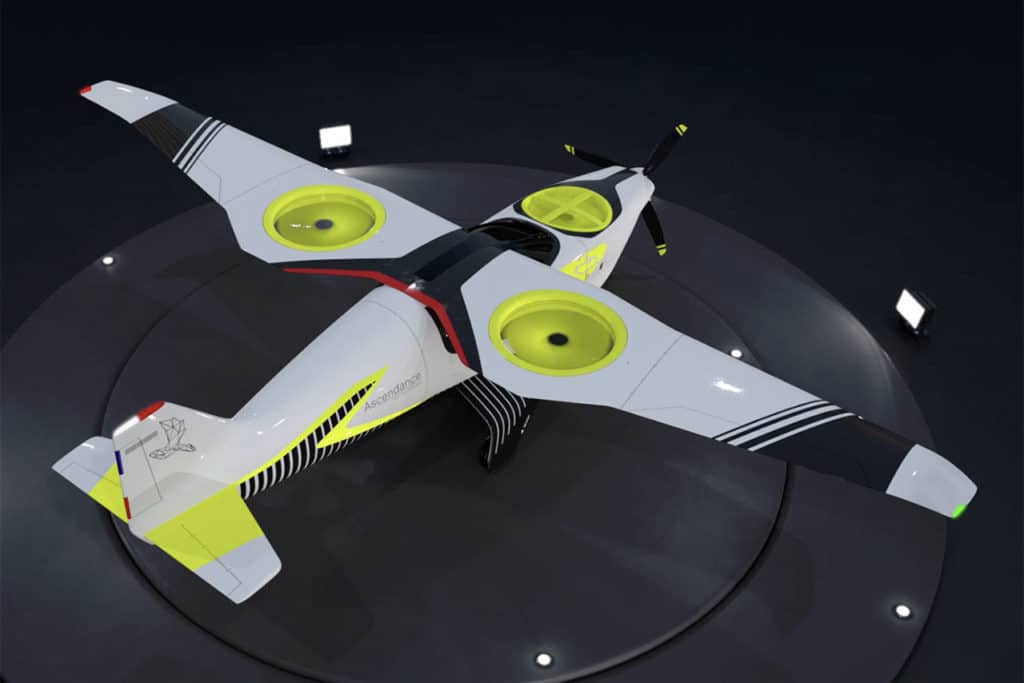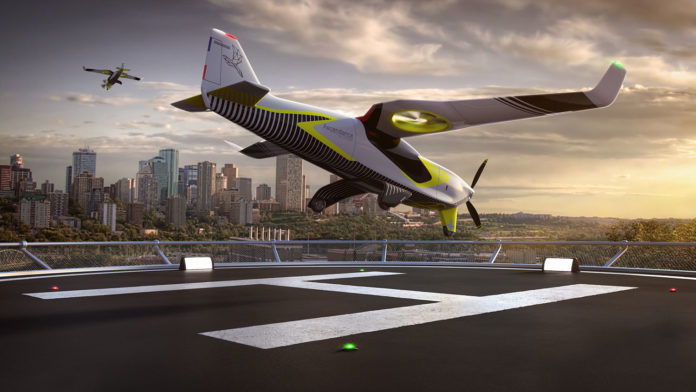Currently, most of the projects for vertical take-off and landing (VTOL) electric aircraft are in the concept stage and are waiting in the wings. This is due to the fact that modern batteries and other sources of electricity are either not able to provide transport with power for an acceptable period of time or are unsafe for use.
Fueled VTOLs also face a number of problems, but at least they can stay in the air long enough for small flights. However, emissions from this type of transport are significant. So the French company Ascendance Flight Technologies decided to take the best of both traditional and electric versions. The startup has developed a hybrid vertical-take-off hybrid (VTOL) aircraft called Atea with an ability to fly long distances and low emissions.
While many electric VTOL vehicles also use wings, none looks as close to a standard small aircraft as Ascendance Atea. The new VTOL retained the fuselage, front propeller, and T-shaped tail unit from standard aircraft. Significant differences can be seen by looking at the wings of the concept vehicle: in their wide part, closer to the fuselage, there are three medium-sized five-bladed fans, which are responsible for vertical take-off and landing.

Two of the propellers are on the wings, and the third is ducted right through the front of the fuselage. All three of these structures are devoid of a central bearing axis, and the blades are driven from each fan’s outer circumference. There is a conventional propeller in the front of the plane powered by a turbine engine. The Ascendance Atea holds three passengers and one pilot.
The developers say they want to use a medium-sized battery that will power the electric propulsion system. The electric motor will be paired with a gasoline engine. Although the company has not yet revealed the range of the Atea air taxi, it emphasizes that gasoline stores about 50 times the energy per unit weight compared to current lithium batteries.
The company’s Atea hybrid VTOL air taxi will be innovative, safe, low noise, clean, have low operational costs, a long-range, and will easily integrate into existing aviation infrastructure and regulations. It is assumed that due to the hybrid installation, the emissions of such a VTOL will be 50-80% less than that of a conventional helicopter.
Ascendance Atea is in the concept stage, so its design may still change. Their goal is to have it flying by 2024-2025.
According to industry experts, the near future belongs to hybrid solutions. Although it will not be completely emission-free propulsion, such as battery-powered or hydrogen-powered, hybrid propulsion could help improve the ecology of flying in the coming years.
